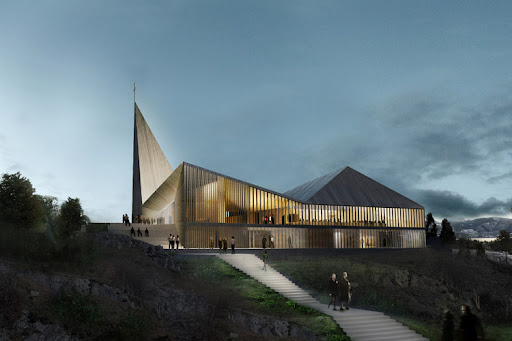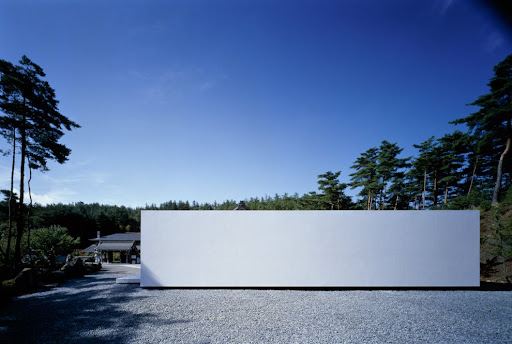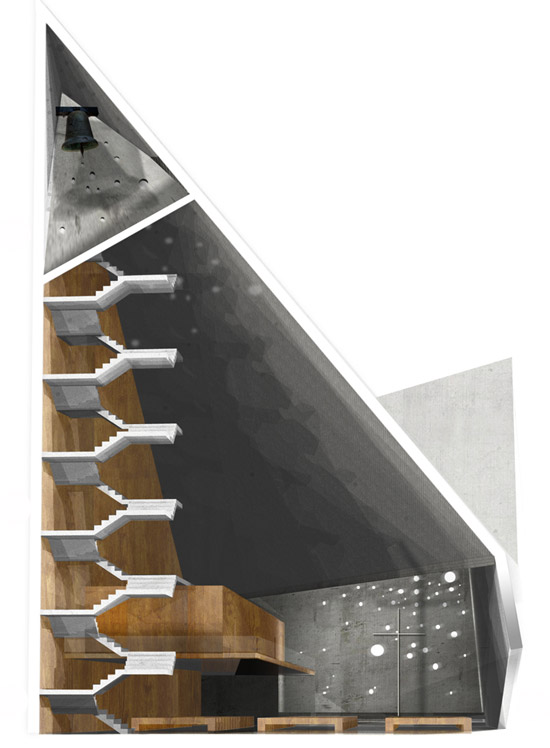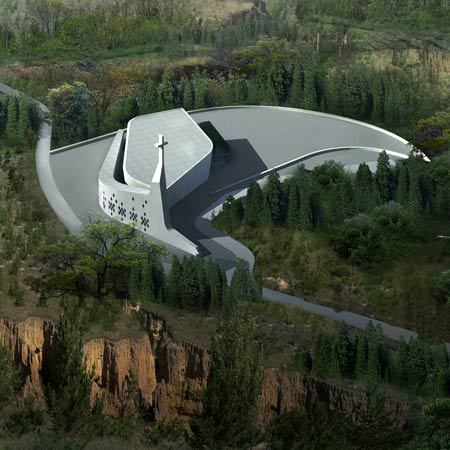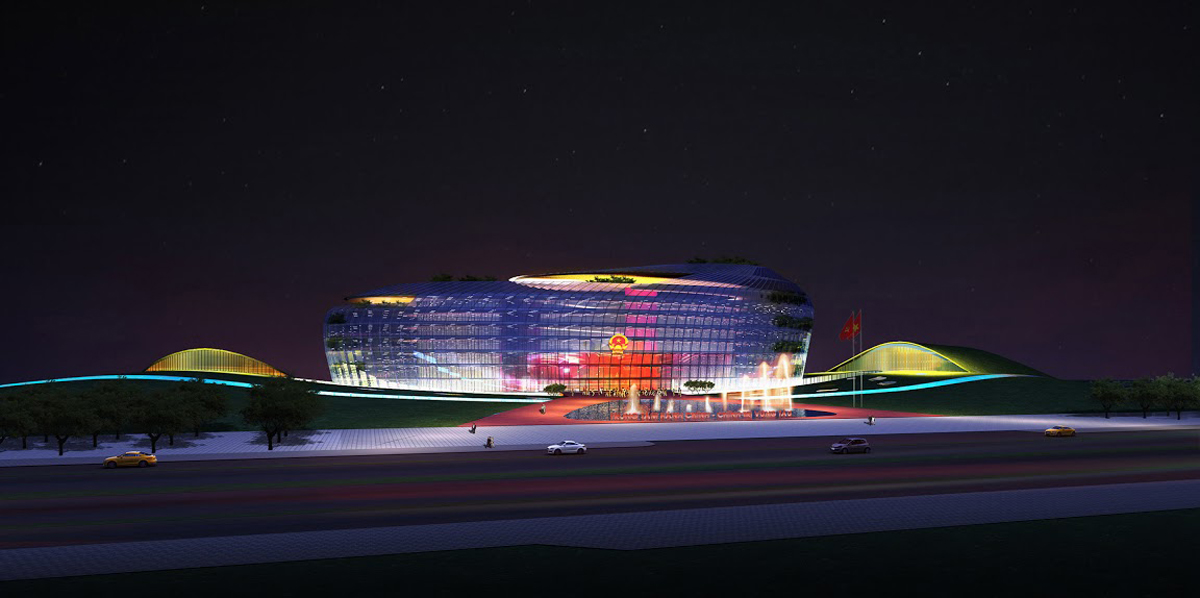Our lady of La Vang pilgrimage center, Quang Tri - Viet Nam, Design by Lib.A
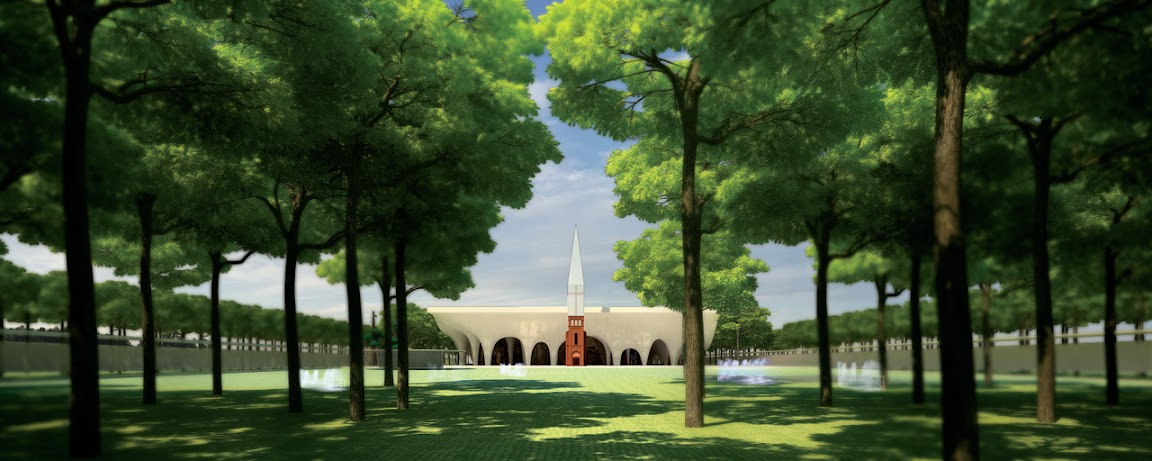
© Hùng Hưng-Lib.A
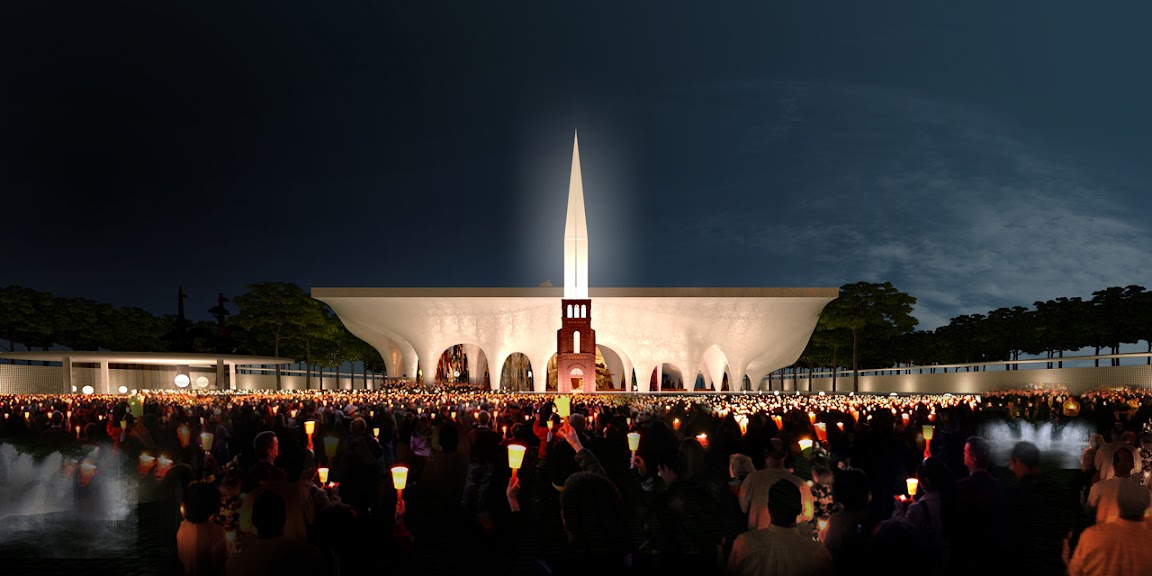
© Hùng Hưng-Lib.A

© Hùng Hưng-Lib.A
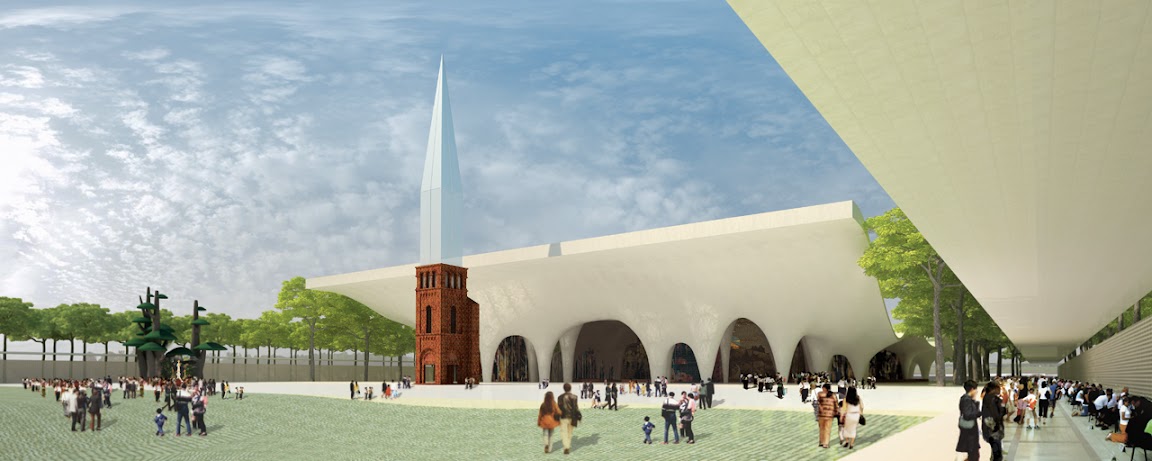
© Hùng Hưng-Lib.A
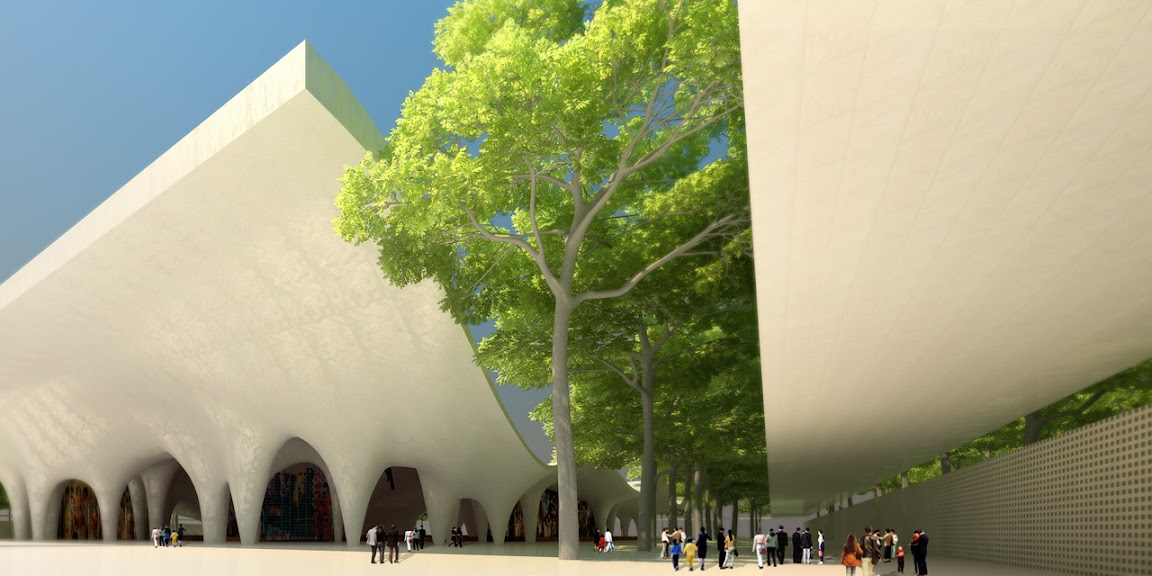
© Hùng Hưng-Lib.A
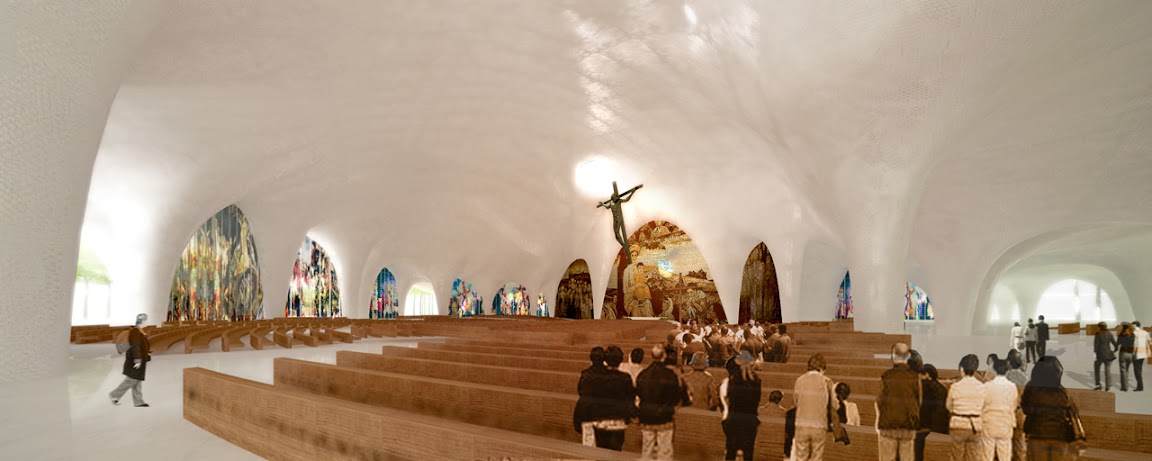
© Hùng Hưng-Lib.A
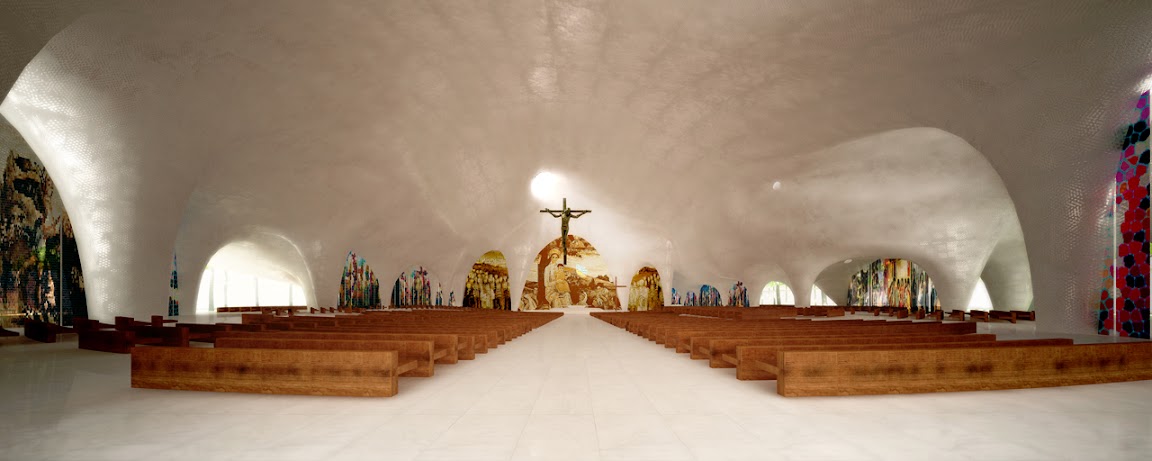
© Hùng Hưng-Lib.A
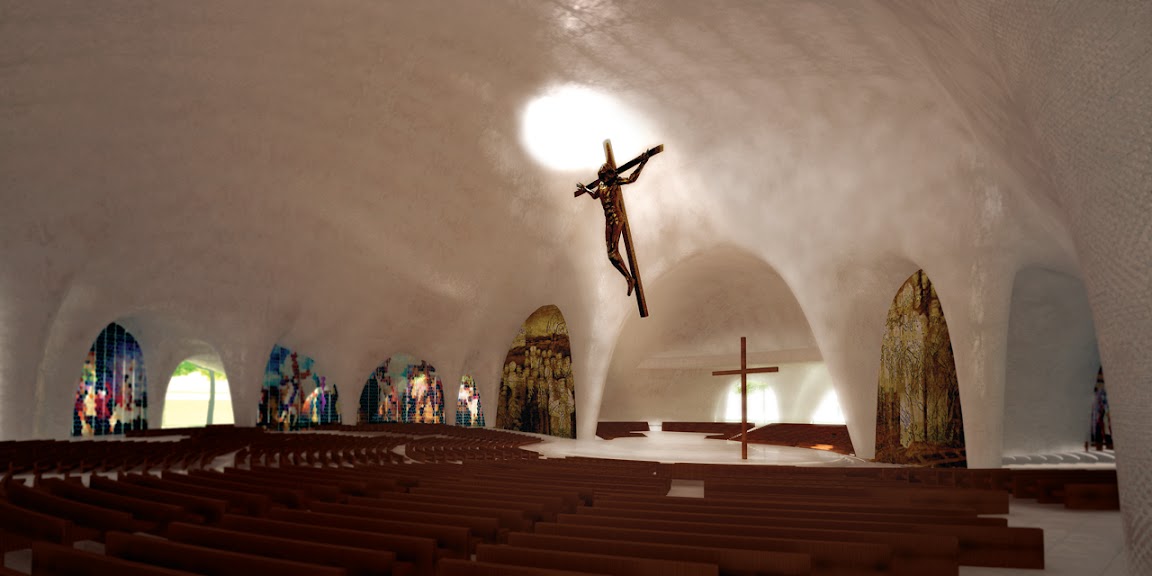
© Hùng Hưng-Lib.A

© Hùng Hưng-Lib.A

© Hùng Hưng-Lib.A
Architects: Hùng Hưng-Lib.A
Design team : Hung Hung, Nguyen Duc Bao Toan, Tran Manh Phat, Le Ngoc Dang, Vu Viet Anh
Stage : Competition
Location: Quang Tri , Viet Nam
Site Area: 213,512.2 m2
Project Year : 6-2010
Images from : Hùng Hưng-Lib.A
La Vang is a small area located in Quang Tri, a province in central Vietnam. Quang Tri bears the harshest weather in Vietnam with hot and dry wind from the west and storms from the East Sea. Besides, since the whole province was the buffer zone where Vietnam was split into two parts during the Vietnam War, it was the most damaged place to suffer from the fierce front. There was a story about the apparitions of Mother Mary at this place 200 years ago to save Vietnamese Christians when they were chased and executed by the governor. Eventually, the place was acclaimed to be the Holy Land and its church was raised to be one of the five Cathedral Basilicas of Vietnam in 1961 before it was damaged by the war. The task is to design a pilgrimage center that includes a plaza, a 5000-seat cathedral basilica, a 3000-seat conference hall, an international conference center, a meditation center, a gallery, an administration building and some other buildings serving the pilgrims whose number is predicted to rise up to one million in each triennial pilgrimage season (the record number of the last season was nearly six hundred thousand). The client wanted to develop the area within two decades and asked for a layout that would allow an easy development taking place in the future. The Cathedral Basilica which is the most important building will be designed and constructed in the first phase. Furthermore, the ruin bell-tower, the holy well and the concrete banyan tree marks the apparition place will be preserved and restored as a lively remnant of the apparition of the Holy Mary in La Vang and the seed of hope She has planted in the pilgrims’ soul. The main concept is to re-create the original woods where the Holy Mary appeared. The Cathedral is also conceived as an artificial wood. This original concept of the wood aims to create an uninterrupted and undirected space that allows people to draw their own paths within the Only Path of the Faith. The wood, especially the entrance garden, simultaneously plays a role as a memorial without any monument. This spatial memorial does not introduce the pilgrims any pre-organized path but leaves them undirected. Thus this experience of getting through a wood mentally and physically reminds the pilgrims their ancestor who lived and died bravely to protect their Faith. Yet the vision of the Tower of Light (the bell-tower) which represents Jesus Christ gives them the only visual direction to follow. The cathedral is an open structure that helps render the solemn atmosphere inside to outside and render people from outside to inside. At this point, the elements of traditional architecture, roofs, columns and verandas can make it possible. No traditional image, ornament or technique is kept in this design except these three fundamental elements which maintain not only the basic need of cover and protection but also provide a soft cover allowing absorbance between inside and outside. This kind of traditional structure keeps everything both open and close, improves the micro-climate inside and helps save energy. The project is conceived and designed as nearly a mere structure to reduce the feeling of icons as much as possible. Individuals who use the buildings and enjoy the landscape are leave to be free to make spaces their own place and easily make connection to themselves, to others, to the buildings, to nature and to the Eternal. Architecture becomes intermediate.
Source: Hùng Hưng-Lib.A
m i l i m e t d e s i g n – W h e r e t h e c o n v e r g e n c e o f u n i q u e c r e a t i v e s
TYPE OF WORKS
Most Viewed Posts

Lotte World Tower design by KPF
2555 views

Lusail Museum design by Herzog & de Meuron
2437 views

Chaoyang Park Plaza design by MAD Architects
2148 views
Since 2009. Copyright © 2023 Milimetdesign. All rights reserved. Contact: milimetdesign@milimet.com







